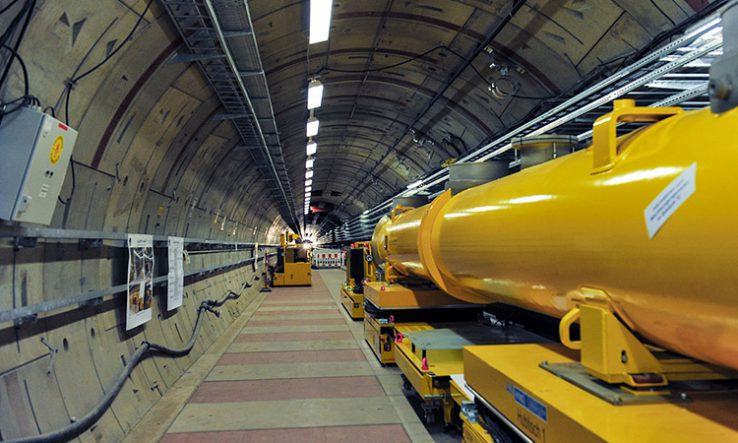
Image: Simon Bierwald [CC BY 2.0], via Wikimedia Commons
Russia’s invasion has upended the politics of Europe’s largest research facilities, says Katharina Cramer
Big science projects are always politics by other means. Decisions on funding, site selection, voting procedures and organisation are smoothed or hindered by consensus or disarray among participating countries and their governments. Alliances often mirror wider strategic partnerships, and national elections and political reorientations can derail long-term planning.
As well as shattering post-Cold War geopolitics, Russia’s invasion of Ukraine has eroded the political foundations of Europe’s big science collaborations. A period that began after the second world war looks to be ending, and the strategic role of large-scale research collaborations between European and non-European countries is being rethought. Like Europe, big science faces a new geopolitical reality.
XFEL and Fair
Russia is involved in many European research infrastructures, including the Iter fusion project, of which it is a member, and the European Synchrotron Radiation Facility (ESRF), where it provides 6 per cent of operational costs. But the facilities with the deepest links to Russia are the European XFEL (pictured above), a free-electron laser, and Fair, an antiproton-ion accelerator, both located in Germany.
Both projects emerged in the early 2000s, when Germany was particularly close to Russia under social-democratic chancellor Gerhard Schröder. Angela Merkel was less close but maintained the commitment when she became chancellor in 2005.
Russia is XFEL’s second-largest funder, agreeing in the 2009 convention underpinning the project to pay 23.1 per cent of construction costs. This money, amounting to €250 million, filled a gap left when countries including Spain and Italy pulled back from agreed commitments after the 2008 financial crisis. Russia also signed up to pay 17.3 per cent, or €178m, of the construction costs for Fair in its 2010 convention.
These investments were part of a policy aimed at internationalising Russia’s science base, growing its strength in nanotechnology and nanomaterials, and making the country less economically dependent on oil and gas. Its participation is national politics by other means; it is a projection of power and security interests.
In light of the Ukraine war, several European governments have ordered their scientific institutions and universities to suspend cooperation with Russia. This also affects Fair and XFEL.
In a statement on 2 March, the managing directors of XFEL wrote that they would “not start new agreements with Russian institutions and will suspend existing ones, while respecting the mandatory legal obligations”.
Fair’s managing directors said on 4 March that they would suspend cooperation with Russian state institutions—but also that for projects involving Russia, they would “coordinate with the other partners regarding further implementation of the international agreements. Adjustments of the measures will be made depending on the further development of the situation.”
Such qualified statements show both facilities entering uncharted territory, where decisions need to be made quickly, on shaky legal ground. They highlight Europe’s inexperience around what happens when collaborative big science meets geopolitical crises, and war severs ties that were thought to be stable.
Similarly, the ESRF’s 1 March statement decrying Russia’s aggression stops short of breaking research ties, while Iter, whose members include China and India, has so far remained silent.
The future
So what might the future of European big science look like?
First, for European facilities to be more resilient, policymakers need a more systematic understanding of the global power hierarchies, the vulnerabilities of big science facilities and the politically delicate dynamics of alliance-building behind such large-scale projects.
Reformulating the geopolitics of big science is a piece of this puzzle. For a long time, the main issues have been geographical: site selection, access, travel and visas. The effort to decouple from Russia shows that we also need to think about virtual demarcations such as computational and data resources.
Second, European policymakers may now task their big science projects with building a self-sufficient research ecosystem, one that ties industry and academia closer together. The European Commission, national governments and funding agencies have already loaded these facilities with political hype, trumpeting their ability to solve grand societal challenges from climate change to ageing. This risks overestimating facilities’ ability to repay investment in such application-oriented research; finding the right strategy will mean striking a subtle balance between scientific and political priorities.
Katharina Cramer is at the Center for Advanced Security, Strategic and Integration Studies at the University of Bonn. She is the author of A Political History of Big Science: The other Europe (Palgrave)
This article also appeared in Research Europe